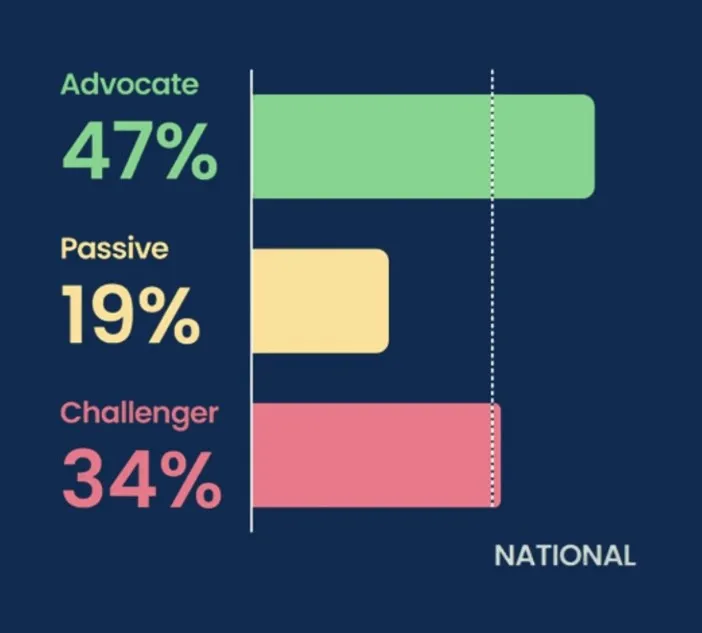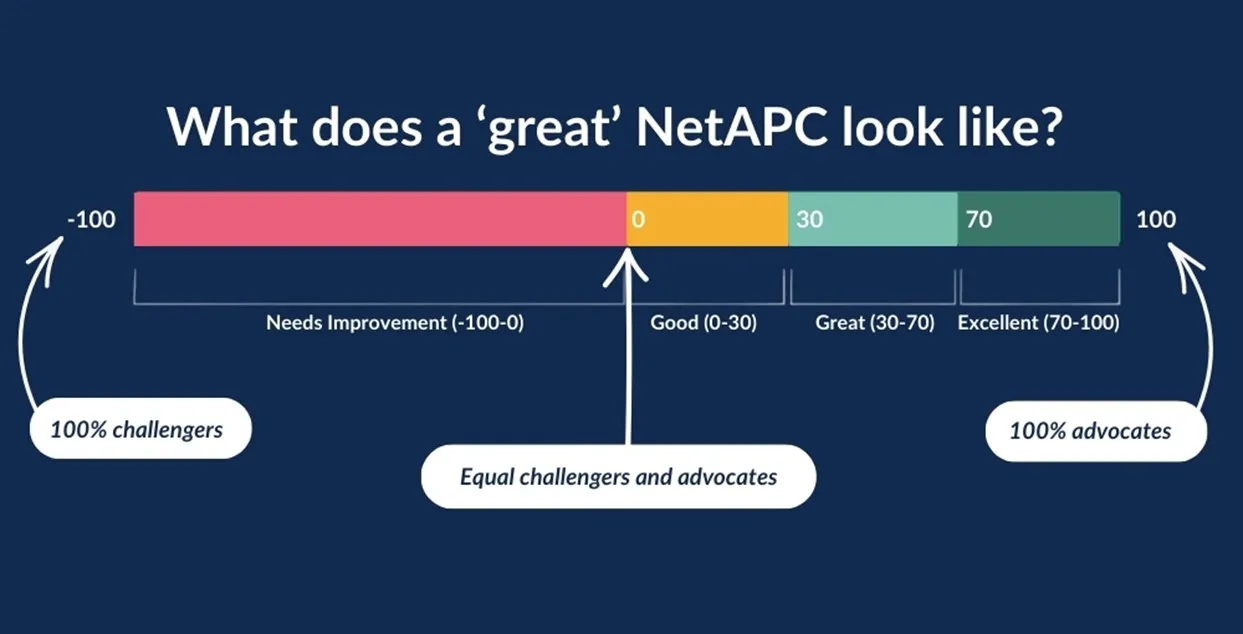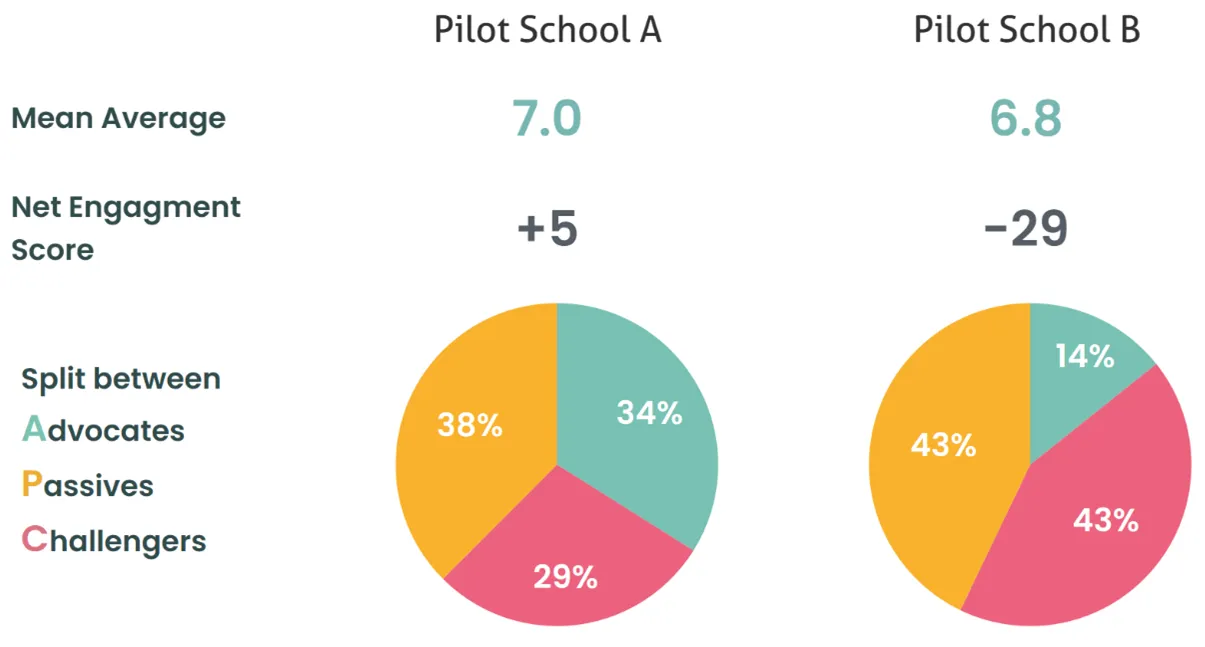APC is a method of scoring, designed by TEP, to allow you to spot nuances and patterns in your data more effectively. It goes beyond the mean score and gives you a better understanding of the distribution of your scores. At a quick glance you can understand the balance in sentiment and your overall school culture.
What is APC?
Once all responses are received nationally, data for each question and driver is sorted into three groups:
· Advocates (top third of scorers)
· Passives (middle third of scorers)
· Challengers (bottom third of scorers)

By understanding how this data connects with attitudes and behaviours of your staff, we can deduce some key traits for each of these groups of scorers.
Advocates, for instance, are more likely to be positive influences on your school culture, more likely to be retained and feel a high affinity to your organisation. Passives, on the other hand, might be more apathetic and even, potentially disengaged from your organisation. And Challengers could have a higher retention risk compared to the other groups and likely to have fewer positive experiences in your school.
Once your school data has been collected, we then report back how many of your team fall into each tercile. You might find that while your mean score is fairly close to TEP benchmarks, your APC can provide further insights into the breakdown of scorers at your school. For example, your APC might reveal that your mean score is made up by a group of very high scorers (advocates), and very low scorers(challengers) – thus an ‘us and them’ dynamic may need to be addressed.
NetAPC:
We can summarise your APC distribution through a simple score you can track over time – a netAPC score. On a scale between -100 and 100, you can track your progress more clearly than through a mean.
Your netAPC score is calculated by Advocate % - Challenger %.The national benchmark will always be zero. A positive score will indicate you are above the benchmark and have more advocates than challengers, and a negative score below the benchmark indicates you have more challengers than advocates.

How do I interpret APC?
APC scoring allows you to interrogate your data to provide more meaningful insights. Looking at the example below, we can see that Pilot School A and B both received very similar mean scores for leadership. However, by delving deeper into the APC scoring we can see that the school climates are very different between the schools.

At a quick glance the netAPC score for these schools reveals quite different cultures and action areas.
School A has almost equal splits between advocates, passives and challengers, and a positive netAPC score. By understanding this breakdown, TEP could suggest school action areas that are focused on understanding the demographics of School A’s passive group and finding ways to turn these passives into advocates.
On the other hand, School B has a negative netAPC score, meaning there are a higher proportion of challengers than advocates. School B would need to shape their action plan around this large group of challengers.
As you can see, the approach the leadership teams might take between these two schools would be quite different, and while the mean scores are similar the netAPC score helps to determine these nuances in the data.
What would the APC distribution look like for your organisation?
Curious to know how many advocates you have in your team? Or how many of your team are challengers and a potential retention risk? TEP can set you up to get a baseline report for your team in our next half termly census and reveal the underlying cultures in your team.
Get involved today and you can join our Spring Census kicking off on Monday 4th March. Contact us at hello@tep.uk


%20(1).webp)





.png)

